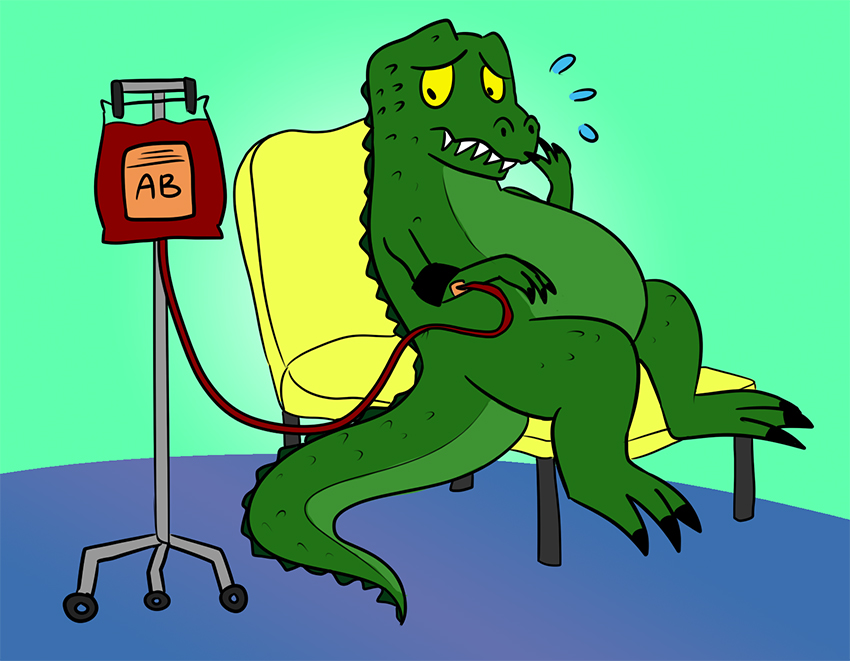Dinosaur hearts haven’t pumped blood for millions of years, but thanks to UT researchers, their intact blood vessels are no longer a thing of the past.
Scientists at UT and North Carolina State have identified authentic blood vessels from a fossilized, duck-billed dinosaurs’ bones. The dinosaurs’ original proteins make up these blood vessels, which means that scientists now have access to age-old tissues.
The researchers found the vessels in the leg bone of a Brachylophosaurus canadensis, which was excavated in Montana in 2007. This research is the first direct analysis of preserved blood vessels from an extinct organism. These could be some of the oldest surviving blood vessels ever discovered, according to tests published in the Journal of Proteome Research. By comparing 80-million-year-old proteins from the blood vessels to those found in organisms today, evolutionary biologists can gain a much deeper understanding of how organisms are genetically and physically different from their ancestors.
“As we uncover more and more [protein] sequences from ancient specimens, we might be able to use the similarities and differences in those sequences to hypothesize about how closely related different species of extinct animals are,” said Elena Schroeter, a postdoctoral student from North Carolina State.
Timothy Cleland, a postdoctoral chemistry fellow at UT, explained that DNA from mammoths has been used to recreate composition of their blood.
“So, potentially if we could find hemoglobin molecules, we could think about the physiology of extinct organisms, instead of just using the bone morphology,” Cleland said.
Scientists are going beyond the fossil record and using molecular genetics to predict evolutionary relationships. The researchers also tested the bones of living relatives of dinosaurs, such as chickens and ostriches, according to Livescience. After testing the protein sequences, they found that the duck-billed dinosaur had the same proteins as these birds. Cleland added that this research helps to establish how prehistoric proteins maintain themselves over millions of years.
“Learning how proteins preserve is a big implication because we are still in the infancy stage of understanding this concept,” Cleland said, “It gives us a better idea of how we can use this knowledge to keep modern proteins in stable conditions.”
According to Schroeter, scientists need to expand their idea of what it means for something to “fossilize.” She said there is still much to learn about the process of preservation.
“[This research] gives us information we didn’t have before,” Cleland said. “We don’t even know the kinds of questions we can ask now.”















